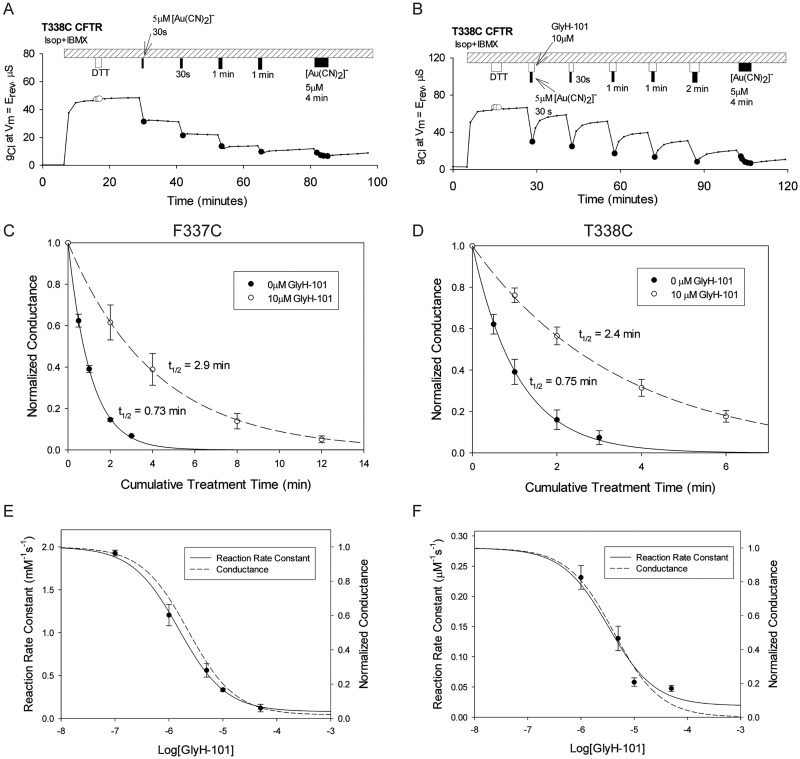Fig. 5.
GlyH-101 protection of T338C (an engineered cysteine at position 338) from modification by [Au(CN)2]−. A, exposure of an oocyte to 30-s and 1-min pulses of 5 μM [Au(CN)2]− resulted in reductions of conductance. Covalent labeling of the T338C CFTR was almost complete after a cumulative exposure time of 2 min. Isop, isoproterenol. B, the oocyte was exposed to 5 μM [Au(CN)2]− in the presence of 10 μM GlyH-101. The blockade attributable to covalent labeling was less than 50% after a cumulative exposure time of 2 min. The application of GlyH-101 was started 30 s before the application of [Au(CN)2]−, to ensure maximal blockade of the channels during the [Au(CN)2]− reaction. The GlyH-101 application was continued 30 s after the end of the [Au(CN)2]− application. C and D, F337C (C) and T338C (D) CFTR channels were protected by 10 μM GlyH-101 from reactions with [Au(CN)2]−. Data points represent mean ± S.E.M. (n = 3). The F337C CFTR was reacted with 600 μM [Au(CN)2]− and the T338C CFTR was reacted with 5 μM [Au(CN)2]− in the presence and absence of 10 μM GlyH-101. The lines represent the best fits of single-exponential functions to the normalized conductance data. The half-life of each single-exponential fit is shown. E and F, the rates of reaction of [Au(CN)2]− with F337C (E) and T338C (F) CFTRs decreased as the concentration of GlyH-101 was increased. Data points represent mean ± S.E.M. (n = 3). Solid lines, best fits of sigmoidal dose-response curves to the reaction rate data. Dashed lines, dose-response curves for GlyH-101 blockade of the cysteine-substituted constructs observed in this study. The reaction rate constant observed in the absence of GlyH-101 was used as the maximal value of the sigmoidal curve. The EC50 and the minimal rate constant for the F337C CFTR were 1.6 μM and 0.08 mM−1 s−1, respectively; values for the T338C CFTR were 3.3 μM and 0.02 μM−1 s−1. The EC50(0) values for GlyH-101 blockade for the F337C and T338C CFTRs were 1.8 ± 0.063 (n = 3) and 3.7 ± 0.27 μM (n = 3), respectively.

